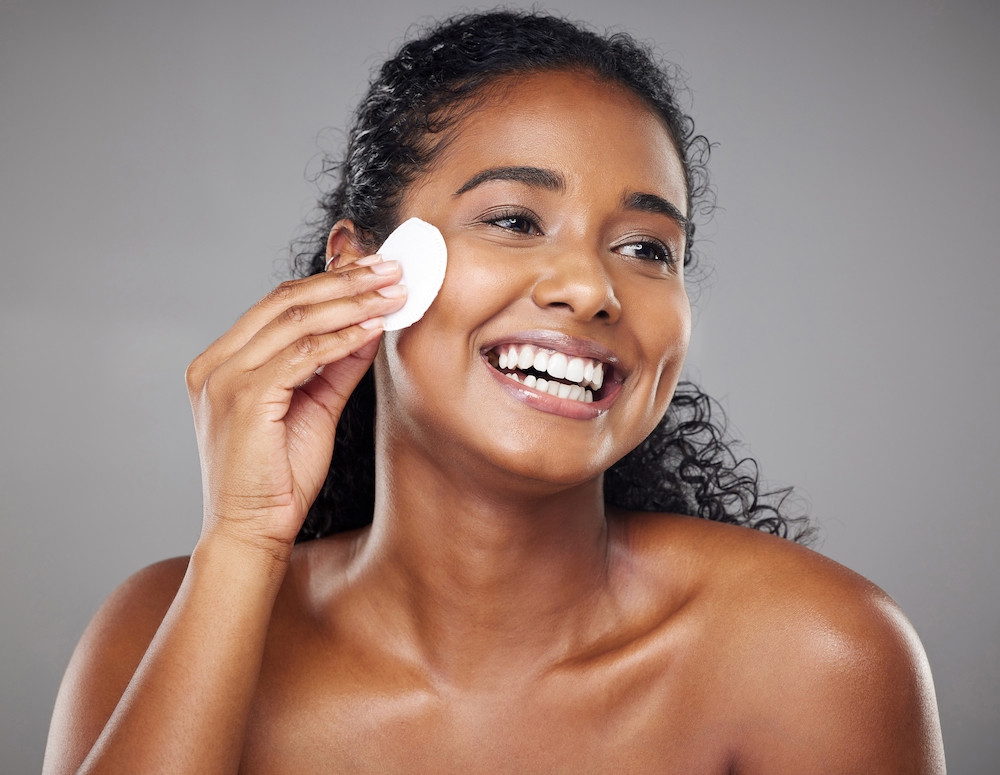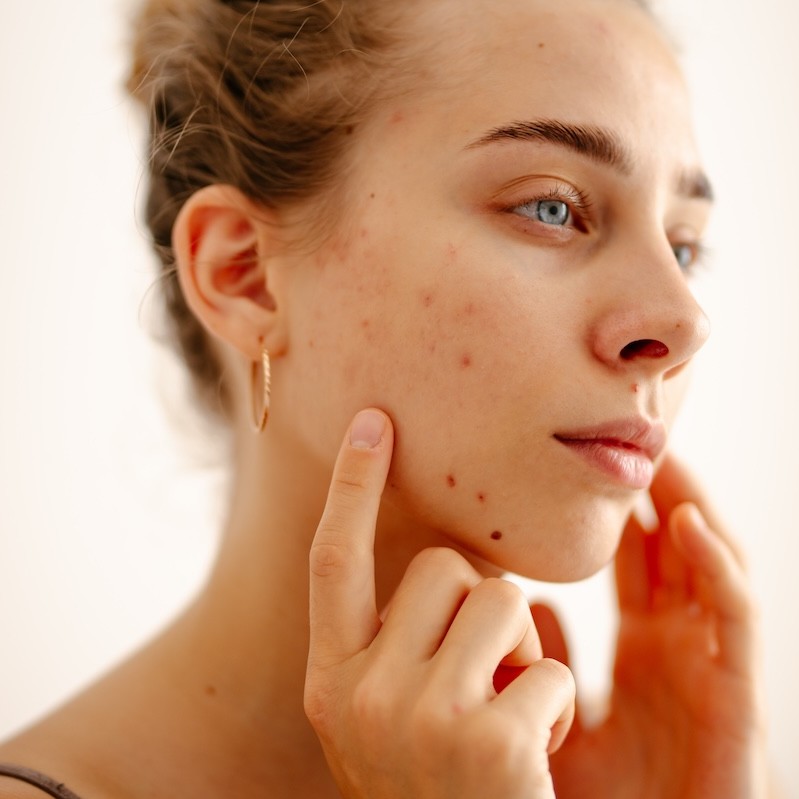Polycystic Ovary Syndrome (PCOS) can cause symptoms including irregular periods, weight gain, oily skin or acne, and hirsutism – excessive hair growth on the body, face, neck and chest. However, when it comes to waxing clients with PCOS, there are some considerations to be made…
What is PCOS?
PCOS is a common condition which is thought to affect one in 10 women in the UK.
It occurs when the ovaries produce higher amounts of androgens, a “male” sex hormone which is usually present in women in small amounts.
One potential symptom of PCOS is hirsutism. On the face, this hair growth can present as more vellus hair (peach fuzz) or stronger dark hair, or both.
What needs to be covered in a pre-treatment consultation for waxing clients with PCOS?
PCOS is a hormonal condition, so therapists will need to explain to clients that the texture and thickness of the hair will vary depending on hormonal changes in their body.
A thorough medical consultation will also need to be carried out, as with any client. Since PCOS can cause acne, some clients may be taking medication for this.
“The therapist needs to check any medication, especially Roaccutane or other acne medications, because these can thin the skin, and in this case, waxing is not advisable because it can take off the top layer of skin,” explains Olga Lampard, head trainer for Italwax.
“You will also need to know if the client is having any other form of hair removal in the areas,” adds Lisa Stone, waxing expert and Salon System head educator. “You cannot wax if someone is receiving electrolysis or laser in that same area.”
It’s also important to ask about clients’ current hair removal methods, as shaving and certain creams can cause the skin to be sensitive.
Other products can make the skin more sensitive too. “Check if the client uses any AHA or BHA products like glycolic or salicylic acids because these also exfoliate the top layer of skin and can react with the heat of the wax,” says Lampard.
She continues, “If the client uses over-the-counter products (i.e., not prescribed by their doctor) ask them not to use them on the area they want waxed at least a week before treatment.”
If the client hasn’t had facial waxing before, it’s advisable to carry out a patch test first to assess how the skin responds and recovers.
It’s also important to manage clients’ expectations. PCOS can cause hair to grow quickly and in an irregular growth pattern, so clients need to be aware that they might need regular waxing sessions to manage the different hair growth stages.
What prep needs to be done for waxing clients with PCOS?
The skin requires preparation, just as it would for anyone having a waxing treatment. However, there are additional factors which need to be taken into consideration.
“Remember that clients with PCOS tend to have much oilier skin,” says Stone.
“A very thorough cleanse is important to remove surface oil; if it isn’t removed thoroughly then the wax may not be as effective at removing the hair.”
Lampard also advises exfoliation. “Advise the client to exfoliate at least two to three times a week and always the day or morning before waxing to make sure all the hair is on the surface, so that the waxing is smoother and more thorough.
“Clients should also moisturise the skin to keep it in good condition and to help avoid ingrown hairs,” she says.

Should you adapt your waxing technique for clients with PCOS?
This is where the work you put into the client’s consultation will come in handy. If you’ve already determined the hair type that you’re treating, this will help you to select the most appropriate wax.
Stone explains, “For stronger, dark hair or hair on the face I would always choose a good quality strip-less wax.”
Tracey Smith, founder of wax and skincare brand Ashmira Botanica, says, “The hair can be strong, so for facial waxing I would definitely recommend a peelable or flexible wax because it grabs the hair much better, is kinder to sensitive skin and causes less redness. It is also applied at a warm, not hot, temperature.”
Before waxing, skin should always be thoroughly cleaned, and a barrier should be applied.
“I would avoid using a pre or after wax oil on the skin, especially the face,” comments Stone.
“PCOS often causes excessive oil production and applying an oil to this skin type can make the oiliness worse, so I would use a lotion.”
When it comes to technique, Stone says, “You are going to be applying and removing wax the same way but be mindful that the hairs are likely to be stronger, so apply a good pressure to ensure all hairs are encapsulated in the wax.”
Lampard adds, “PCOS skin can be more sensitive, so make sure the wax is not too hot and try to go over the area as little as you can: make sure you hold your spatula at a 90 degree angle when applying the wax so that you catch as much hair as you can and remove it in fewer applications.”
If there is active acne or broken skin, it’s advisable to avoid waxing over these areas, and as always, customer care is key: “Be sensitive and compassionate, the client is likely to feel very self-conscious,” Stone says.
What aftercare do you recommend for waxing clients with PCOS?
“Straight afterwards, apply a rich, after-wax cream that has been specifically designed for the face,” says Smith.
“This might contain ingredients like argan oil or cupuaçu, shea or cocoa butters to nourish and hydrate skin. It should also contain calming ingredients like aloe vera to soothe and cool.”
Smith adds, “Try to choose an after-wax cream which also contains a hair retardant so, with regular use, the hair will grow back finer, a little slower, and become less visible.
“It is even better if the cream contains an SPF to help protect sensitive skin from harmful UV rays in the summer months.
“After the treatment, send the client home with a retail version of the cream so that they can continue to soothe and hydrate their skin, reducing and slowing regrowth.”
However, it is important to remember that PCOS is a hormonal condition, so hair retardant creams may not be as effective as advertised – be careful not to mislead clients.
As with any waxing treatment, clients should avoid overheating the waxed area for at least 24 hours after the treatment, and they need to be mindful of the area.
“When showering after waxing, clients shouldn’t use any products,” says Lampard. “Just lukewarm water to keep hair follicles closed up and to prevent any infections from products or bacteria going into the hair follicle.”
Waxing can be a great choice of hair removal for clients suffering with PCOS – it’s fast, effective, and easy to access. However, it does require maintenance.
“Therapists should stress how important it is to keep up with appointments and not to resort to methods such as cream or shaving to remove their hair in between sessions,” comments Stone.
“They will see a difference if they keep their waxing up regularly.”
Stone concludes, “Be sensitive, kind and reassuring, and you will have a very loyal and grateful client.
“You will feel amazing knowing that you’re helping to manage something that can cause distress, and that you’re helping clients to feel so much more confident.”
Don't miss: How to treat the effects of PCOS on the skin and how to reduce post-acne pigmentation and scarring.




